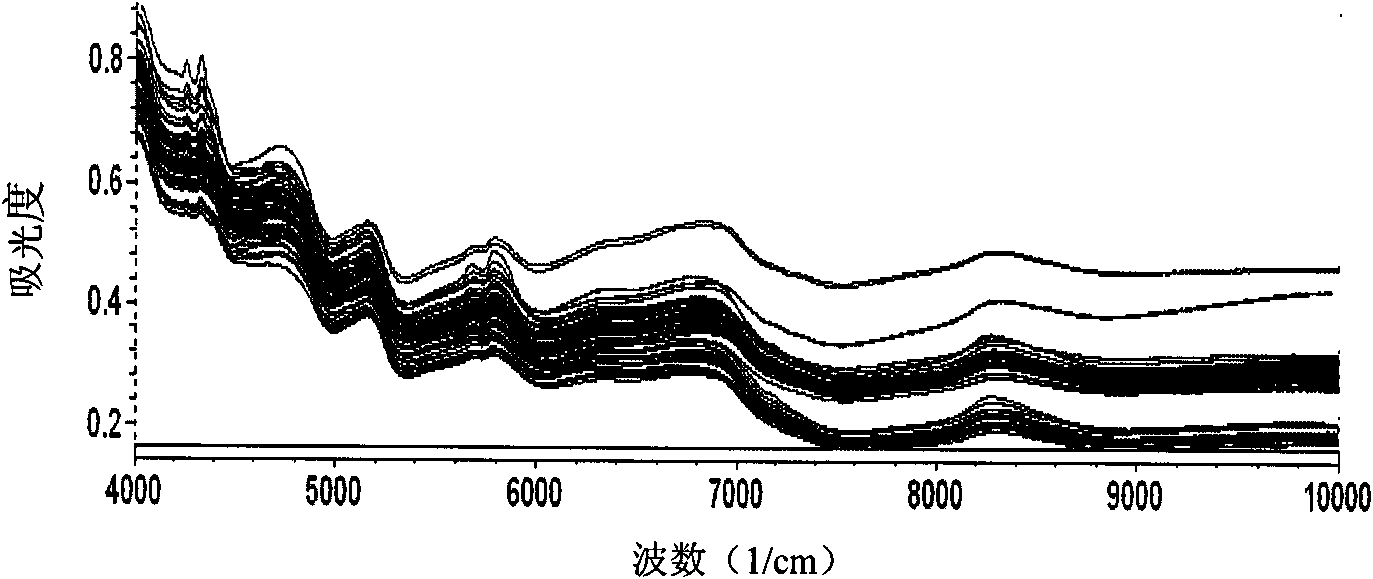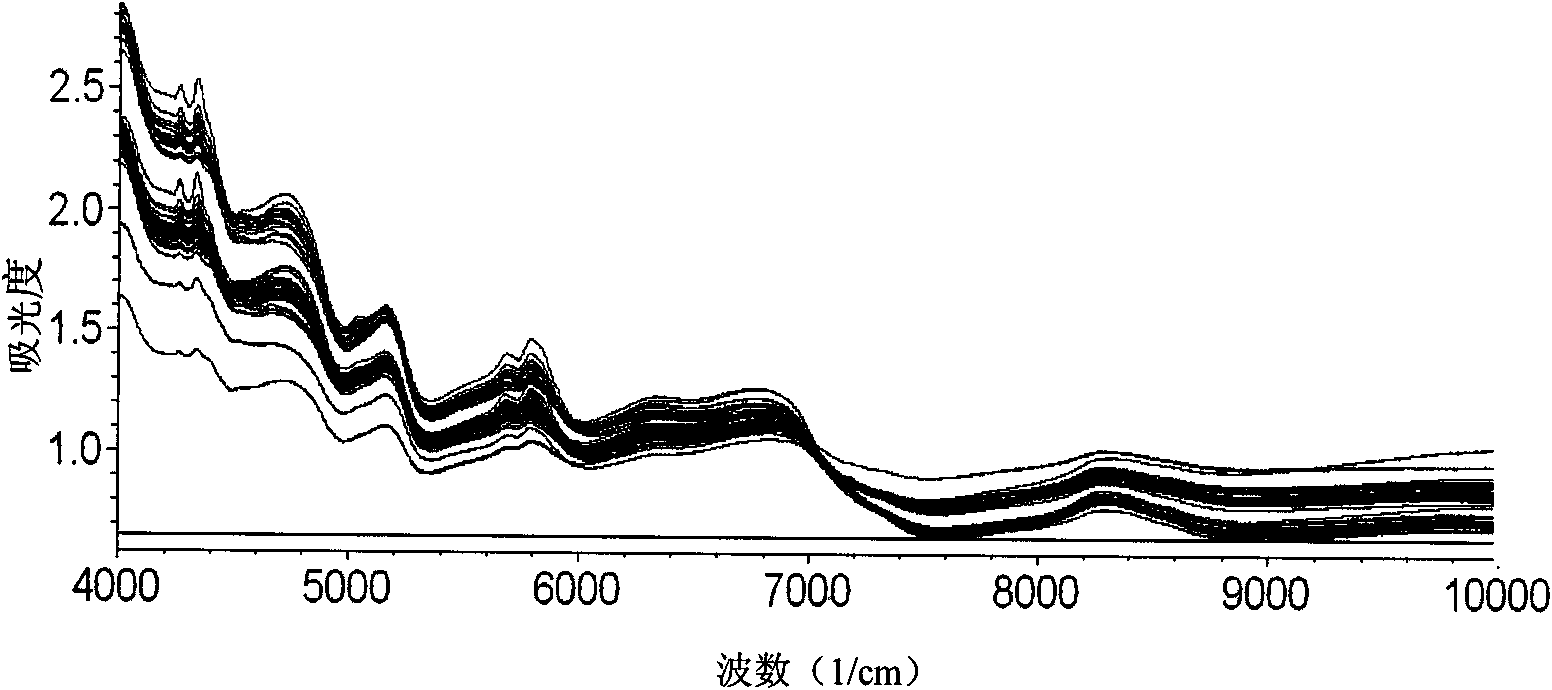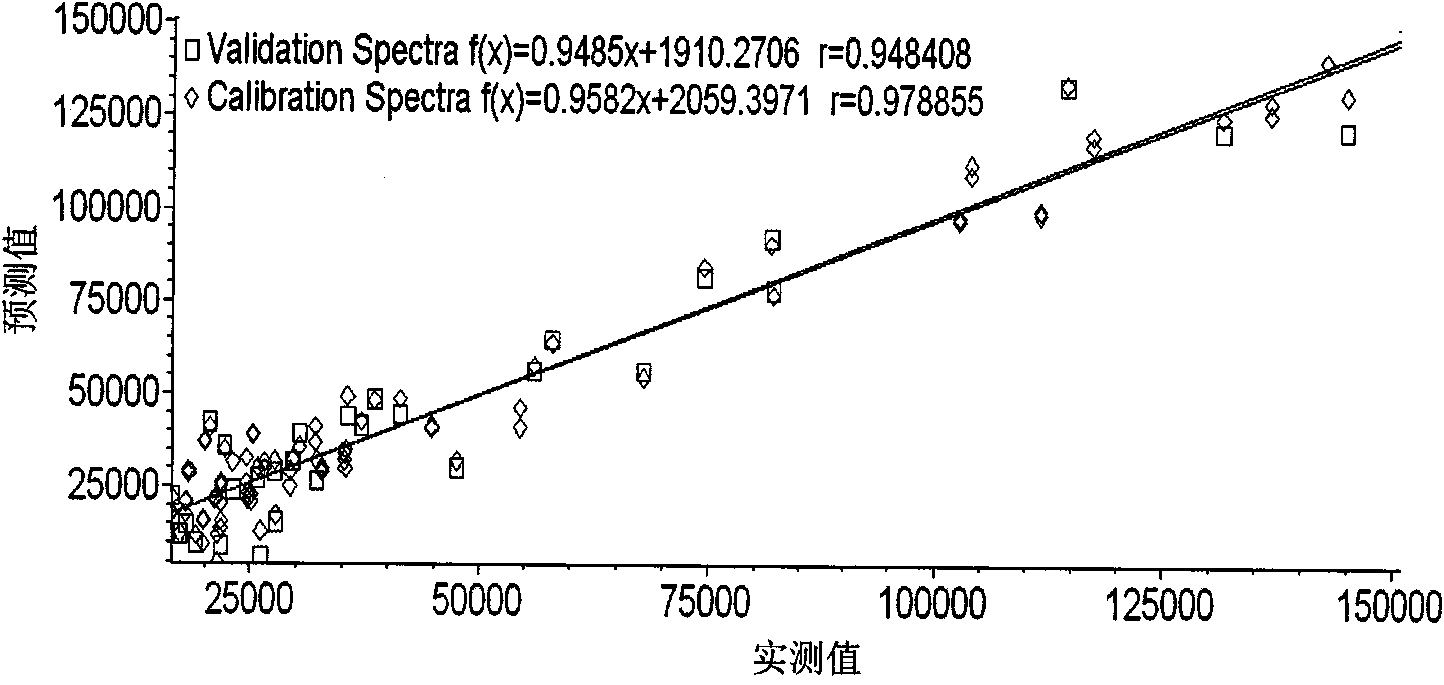Method for determining hot degree of pepper
A detection method and pepper technology, applied in the field of analytical chemistry, can solve the problems of high price, time-consuming and laborious, complicated experimental operation, etc., and achieve the effects of good precision, saving manpower and material resources, and strong penetrating ability.
- Summary
- Abstract
- Description
- Claims
- Application Information
AI Technical Summary
Problems solved by technology
Method used
Image
Examples
Embodiment
[0019] 1 Materials and methods
[0020] 1.1 Materials
[0021] 123 mature pepper samples from the Chinese Academy of Agricultural Sciences. Among them, 93 samples are the calibration set and 30 samples are the validation set. The spiciness ranges from 10779 to 151024.
[0022] 1.2 Instruments and equipment
[0023] NIRLab N-200 near-infrared quality analyzer, Switzerland Buchi company (NIRCalV4.21 software, 12cm sample cup).
[0024] 1.3 Method
[0025] 1.3.1 Sample pretreatment
[0026] Crush the dried chili sample with seeds and skin, pass through a 40-mesh sieve, and spread the chili powder all over the sample cup, with a thickness of not less than 1cm.
[0027] 1.3.2 Near-infrared spectrum acquisition
[0028] At room temperature, the near-infrared diffuse reflectance spectra of pepper powder samples were measured. When measuring, the resolution is 1cm -1 , the number of scans is 3, and the spectral range is 1100-2500nm. After the instrument is preheated for 20-3...
PUM
 Login to View More
Login to View More Abstract
Description
Claims
Application Information
 Login to View More
Login to View More - R&D
- Intellectual Property
- Life Sciences
- Materials
- Tech Scout
- Unparalleled Data Quality
- Higher Quality Content
- 60% Fewer Hallucinations
Browse by: Latest US Patents, China's latest patents, Technical Efficacy Thesaurus, Application Domain, Technology Topic, Popular Technical Reports.
© 2025 PatSnap. All rights reserved.Legal|Privacy policy|Modern Slavery Act Transparency Statement|Sitemap|About US| Contact US: help@patsnap.com



